Every time I plan my next Vietnam itinerary, it's around the same thing: FOOD. And because my best friend is from Saigon, on my trips I also inevitably get to sample foods and ingredients I might have have otherwise thought of, like street porridge or avocado ice cream.
On my last trip to Vietnam, I even managed to try some new foods I'd never encountered before. The culinary tastes of Vietnam are diverse and delicious, with the meaty soups and sweet coffees and bowls of coconut milk Vietnamese desserts just being the start.
This 10 day Vietnam itinerary will take you through those culinary traditions, from north to central to south, with a few history lessons and warnings in between. I'm brutally honest in some places.
While this is from an American perspective, my travels across Vietnam always bring about a lot of discussions with my friend, and what she was taught in school versus what I was. But most importantly: food + culture.
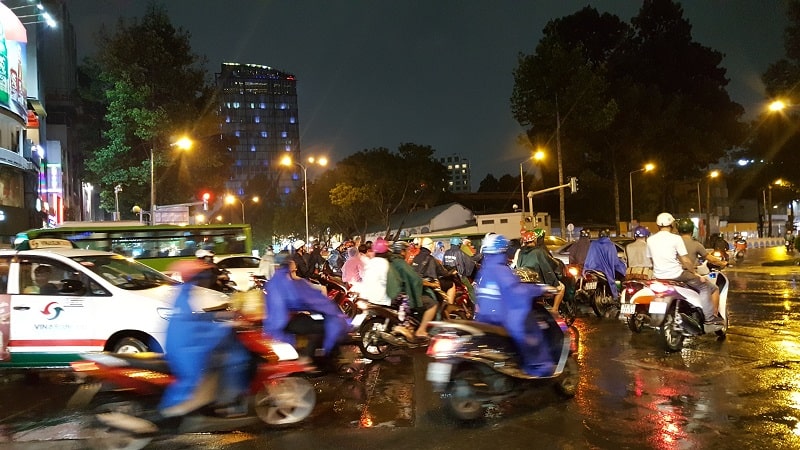
Jump To
Vietnam Itinerary: Travel Basics
The basic primer on Vietnamese history is this: the Kingdom of Vietnam goes back over a thousand years, but in the 1800's the French invaded the country. For 100 years, Vietnam was part of French Indochina, until it was taken over by the Japanese during WWII and then granted freedom following Japan's defeat.
During the decades which followed, the southern and northern parts of the country went to war; in the US we know it as the Vietnam War, but in Vietnam it's referred to as the American War. The details are complicated, with the south asking the US for assistance in fighting the north, and China & the USSR backing the north.
A similar battle between communism and democracy happened in Korea in the 1950's, and remains at a stalemate. After the war ended, the country was left communist, and filtered through half a dozen leaders in the northern capital of Hanoi. Today, the north and the south can feel like different countries, and to most Vietnamese it feels like they are.
Even though Saigon was renamed in honor of communist intellectual Ho Chi Minh, most southerners still call it Saigon. As a visitor it's important to remember the politics surrounding the places you visit, even if they're not your politics.
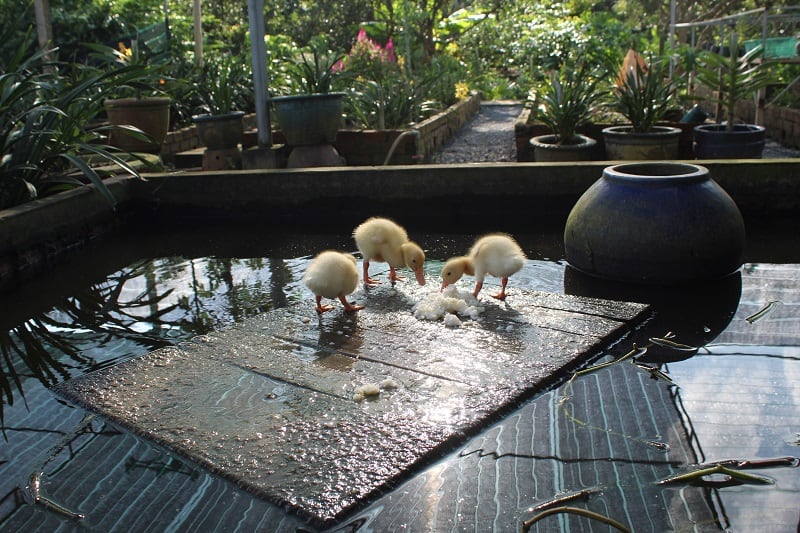
Language: Tiếng Việt (Vietnamese)
Currency: đ, VND (Vietnamese đồng)
Average Cost Per Person Day: $30-50USD (or more if you're super luxe)
Safety: Similar to the rest of Southeast Asia, Vietnam is quite safe. Keep your bag tucked into you and don't stand around on your phone, and you'll be fine. In rural areas you should be more concerned about food safety than physical safety.
Visa Requirements: YES (Most Europeans & North Americans need to apply for a visa; click here to be taken to the {admittedly sketchy-looking} official visa government application).
Best Time To Visit Vietnam: This is always up for debate, but I've been in both springtime and summertime, and I'd recommend coming in the spring, from May to June. It's shoulder season for tourism and it's still hot, but it's also the best season for fresh fruits, clear weather, and reasonable prices. That said, the seasons follow typical northern hemispheric patterns.
In the southern part of the country the heat never really lets up, while the north can dip to around freezing at the coldest part of the winter. Be aware that in the south the biggest factor will then be rainy season, which starts as early as June and can continue into December; this is low season, since the rain often causes flooding.
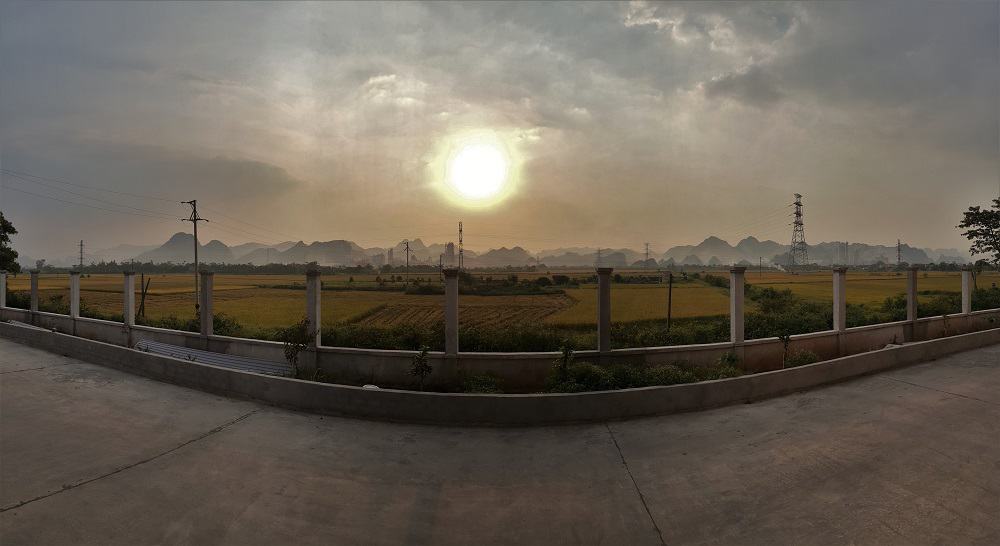
Vietnam Itinerary: 10 Days Overview
- Day 1: Saigon
- Days 2-4: Da Lat
- Day 5-7: Hoi An
- Days 8-10: Hanoi
As you know from above, northern and southern Vietnam are very different. But one often-overlooked part is central Vietnam. I was told that northerners and southerners often can't understand people from the center of the country; it seems to be the only thing everyone agrees on!
So if you only have 10 days in Vietnam, you should get a taste of northern, central, and southern culture & cuisines. Unfortunately for everyone, Vietnam's cacao only grows in the center and the south of the country. For each city I've recommended things to do, where to stay, and some must-try foods & where to eat them.
If you're a faster traveler, I'd recommend taking a day off of each Da Lat & Hanoi, and taking an overnight but to spend 2 days in Nha Trang (a beach town near Da Lat). The reason it's not on this itinerary is because even though the seafood is good there, it's not better than you can get in Hoi An. This is a foodie's itinerary for Vietnam, after all, not a beach lover's.
Note that this Vietnam itinerary can easily be done in reverse.
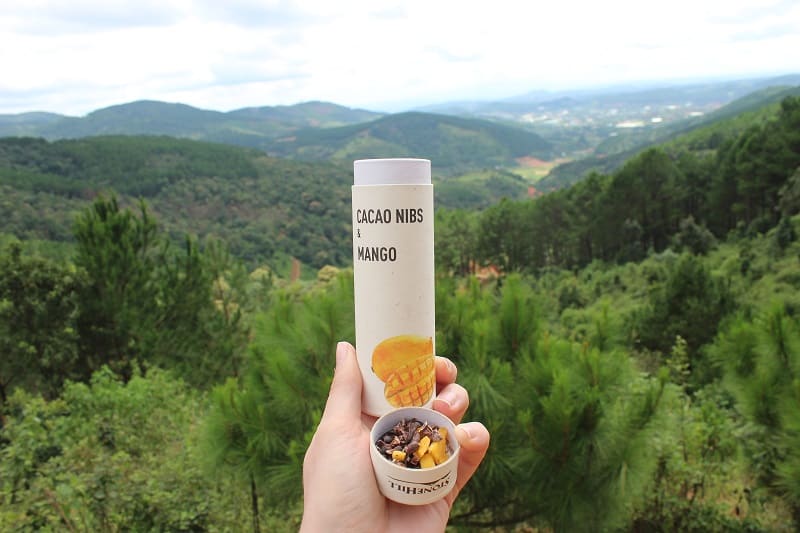
Things To Know Before Visiting Vietnam
- We found day tours across the country to be very flat and touristy to the extreme, and chose to hire private guides where possible. Some of the experiences we did were pretty great, like the K'Ho coffee tour in Da Lat, but anytime we got on a tour bus it always left me with a bad taste in my mouth.
- Most local restaurants are open-air joints with small plastic tables and child-sized plastic chairs, so bring bug spray and hand sanitizer, and a healthy sense of adventure.
- In local restaurants I always just walked over to someone to get their attention, but the proper way to call someone over (if you're a younger person) is by yelling "em oi" (to a woman) or "anh oi" (to a man).
- Most restaurants will serve tea with all meals, though very fancy or very cheap ones will have you order your own.
- Milk means sweetened condensed milk, so be very specific if you want fresh milk, and keep in mind that you may have to bring your own.
- It's better to exchange money at the airport initially, and only take out cash in a large sum later on if you really need to (fees and exchange rates are horrible at ATMs). We paid no service fees and got good rates at the international airports.
- Hotels will ask to see the passports of all visitors staying in the room, and smaller places will always ask you to leave the key at the front desk while you're out, no matter what time you plan to come back.
- Public restrooms have toilet paper outside the stalls so look for it before going in (or bring tissues).
- A life straw works just fine for filtering tap water into clean water across the country.
- A lot of dishes you order in the south will taste completely different in the north and vice versa, like Bánh Flan (Caramen).
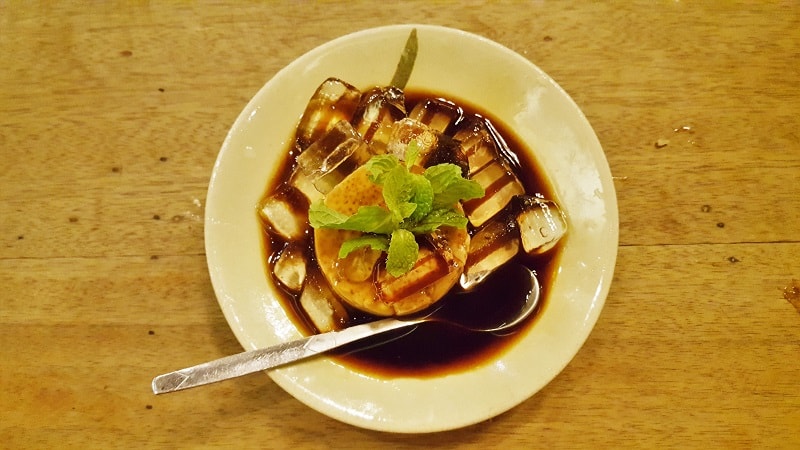
What to Do When Arriving in Vietnam
Most visitors will fly into Saigon, Da Nang, or Hanoi's international airport. The basic steps will be the same no matter what. Once you show your visa paper and are shuttled through customs and baggage claim, you'll emerge in a small terminal.
You need to do 3 things before going to your hotel: take out or exchange money, buy a sim card, and catch a taxi. While you can take Grab cars around the city, they cannot come to any airports in Vietnam. Before you head outside, look for the Viettel or Mobiphone booths to buy a sim card.
We got a 30-day card from Viettel and had no problem with service anywhere in the country. Plus you can pay with Visa card for Viettel, a rarity in Vietnam. Don't be alarmed when they ask to see your passport and take your picture; that's standard for buying a sim card in Vietnam.
Next, exchange some cash at the airport, or use the Citibank ATM (it has a đ6 million daily limit, 2 to 3 times higher than all the other ATMs we tried, so if you want to withdraw cash then that's your best bet). SacomBank also had an okay daily limit at đ3 million.
As for Saigon specifically, shuttle buses into the city cost đ40K (~$1.75USD), but a taxi will be faster and less stressful for just đ130-200K ($6-9USD). Only take Grabs, or MaiLinh or VinaSun taxis around the city, as they're metered and trustworthy companies.
There's a MaiLinh taxi stand just next to the only baggage claim terminal in the Saigon airport. To catch a taxi, simply head out to the taxi area, ignoring every person who tries to get your attention (unless they're wearing a Vinasun jacket). At the curb, walk all the way to the end (to the lefthand side) and try to grab one of the Vinasun or MaiLinh taxis as they arrive.
It's about 6 miles (10km) to get into the city, which takes 20-40 minutes depending on the destination. I recommend booking a guesthouse in district 1; of everywhere we stayed in the city, we loved & would highly recommend Ben Thanh Retreats Hotel.
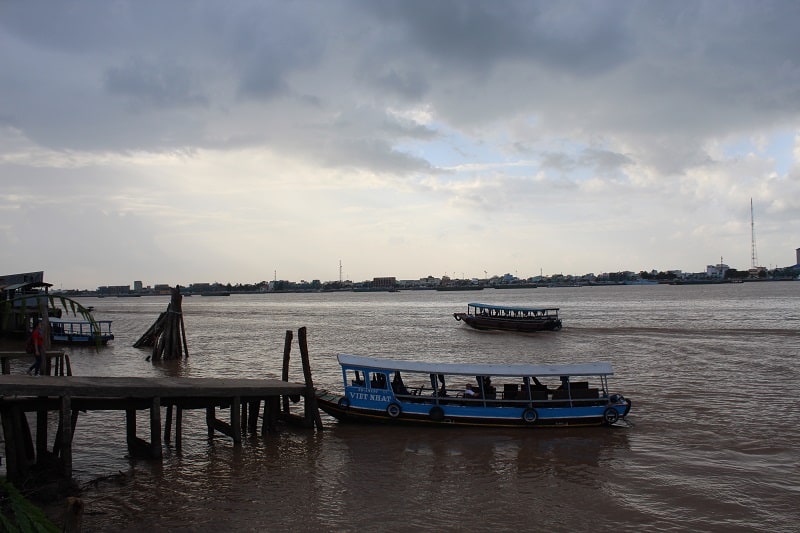
Day 1: Saigon
Honestly, the only reason I really think it's worth spending one day in Saigon is to get a feel for the city and to eat at some of its stupendous restaurants. My first trip to Vietnam I only spent one day here, and my impression of the city was appropriately blurred.
On my last trip I was here for a week, busy the whole time, and the only saving grace was the delicious food. For a central stay in Saigon, I recommend booking a place in District 1, so that you don't have to walk too far the next day.
If you arrive the night before, grab dinner at The Secret Garden; I highly recommend the coconut coffee and chilly lemongrass pork ribs with garlic rice. For your one day in Saigon, it's a good idea to do a self-guided city tour via either Grab Cars or by walking.
The Hop On Hop Off Bus has a terrible reputation and with good reason; give your $15USD per person to local drivers instead. The most popular sights for a single day walking tour of Saigon, with my food-related additions, are as follows.
Start with breakfast at your hotel, or head to Propaganda (which opens at 7:30am) for a full meal and some Vietnamese coffee. Right nearby is Saigon Cathedral, just across from HCMC Central Post Office, both beautiful structures worth wandering through for the aesthetic alone.
Inside the Post Office, which is still a working post office, is one of the country's oldest postal workers, who's spent decades translating letters to & from English, French, and Vietnamese. You may even see him at work that day.

Next up is the War Remnants Museum, a nice respite form the sun during the hotter parts of the day, as well as a good primer for Vietnamese history through the eyes of the current Vietnamese government.
I'd recommend lunch at Pho 2000 or Bếp Mẹ Ỉn (both are near your next stop), depending on what you're hungry for. The famous Ben Thanh Market is a can't miss for foodies visiting Saigon. Just wander around, walking off your lunch and doing a little shopping or people watching— try not to snack too much!
In the evening, walk a few hundred meters to Marou Chocolate, where you can learn all about how chocolate is made and grab some sweet specialties. My personal favorites are the mint chocolate cake, macarons, and the egg chocolate drink.
Ralf's Gelato is another delicious stop if you're not a chocolate fan or have a larger stomach than I (go for the fior di latte). Chill Skybar is the primo spot for sunset & happy hour, with views looking out over the city. Soak in the vastness of it all, and finally cool off after a long day.
If you can consume any more, have dinner back at Secret Garden (if you're me and can't get enough of their affordable & delicious Vietnamese food).
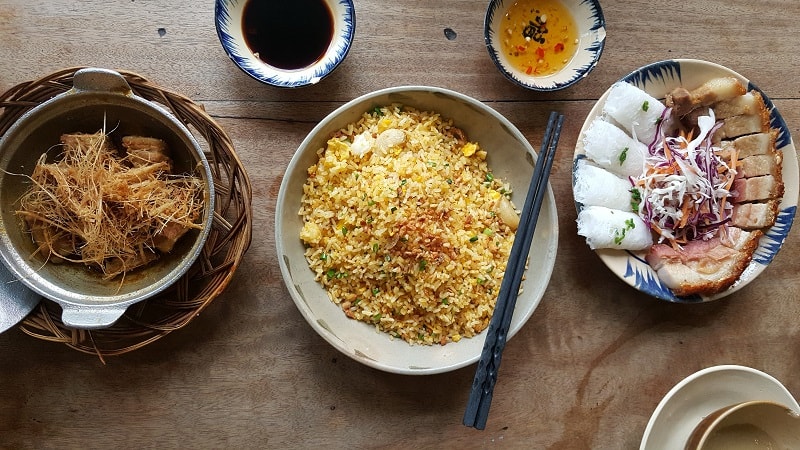
An honest warning follows. Only read it if you want my opinion on some of the most popular activities in southern Vietnam, rose-colored glasses completely removed.
When they only have a few days in Vietnam, many people base themselves in Saigon for their whole time, just doing day trips. But unsurprisingly (see Vietnam Travel Tips below), of the 3 day trips we did in Saigon not a single one was worth recommending. The half-day city tour was pedestrian, the Mekong River was rather sad, and the Cu Chi Tunnels were infuriating.
At first glance the Mekong seems like a great way to see more of Vietnam's natural beauty— of which there is a lot. But in recent years it's become a pull for rural Vietnamese looking to earn money, and the closest interactions you'll have to the "real Vietnam" are locals asking for tips.
Not to dampen your excitement about southern Vietnam, but I also need to take this opportunity to thoroughly discourage you from visiting the Cu Chi Tunnels, which left a horrible taste in my mouth. The whole tour was unsettlingly clinical.
It was exaggeratedly celebratory of the ingenuity of civilians forced to be soldiers, and the complete carnage of war. I can't count the number of times I heard "killing Americans" mentioned happily, as in a glee for revenge.
Lots of people were taking smiling pictures with tanks they were just told were used to brutally murder people from both sides. Not to mention that it's all conducted outside in the heat, with zero respite but for the rest area in the middle (next to the AK-47 shooting range, which is incredibly loud & unpredictable).
The whole experience unsettled the Australians in our group, as well, and reminded me that my money is better spent directly hiring a driver and guide rather than allowing a big company to siphon from locals. I cannot discourage this tour enough. /end rant.
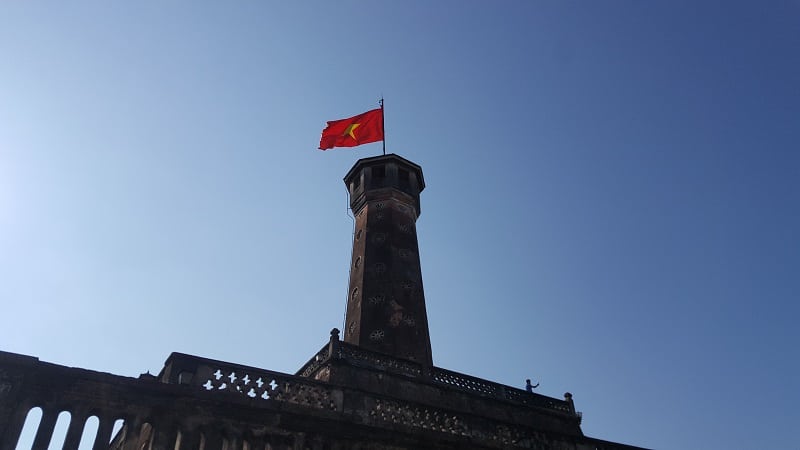
Days 2-4: Da Lat
Flying into Da Lat early in the morning was a pleasant change, not to mention a cold splash in the face after Saigon's heavy heat. Da Lat is a popular weekend destination for domestic tourists during the peak of the summer, so we made it a point to visit during the week.
Honestly, it seemed very empty & safe compared to the big cities, which was a very freeing experience. Plus there are basically no roaches or rats at this altitude! Da Lat is at 5000ft (~1500m), so if you visit in the rainy season and winter months it will get pretty cool at night, like below 50F (10C).
Bring a jacket and pants, as well as a long sleeve shirt for layering. The good thing about all the cold weather is that December to February is strawberry season, and a month or two later is avocado season. March or April is really the best time to visit Da Lat as a foodie or a flower-lover, but even outside of the spring you can find a variety of delicious local dishes & beautiful scenery.
For your 3 days in Da Lat, you'll visit one of the region's famous coffee plantations, take a street food tour, make dishes of your choice in a cooking class, walk the majority of town, and visit nearly a dozen points of interest outside the city during a private tour. Whew.
Pro-tip: avoid the night market for meals, as it's unregulated, and we were told that it's often just unsold leftovers taken from the day market. Instead indulge in street food and meals from open-air restaurants, as the locals do. In fact, this is one of the first things on your Da Lat itinerary.

Day 2 in Vietnam ideally has you flying into Da Lat early in the morning or afternoon, taking a MaiLinh Taxi or the city shuttle into town (the shuttle will drop you off pretty close to your hotel for about $2USD). Once you drop your bags off at your hotel, walk around the city and take in the main sights in the downtown area.
Da Lat wakes up pretty early, so whether you're looking for breakfast or just coffee, you'll have plenty of spots to choose from. While there are a plethora of coffee roasters & cafes, my favorite spots for coffee in Da Lat were La Viet and Married Beans.
Some points of interest in town include the French Quarter, Crazy House, and Ho Xuan Huong Lake, the latter known for its spectacular sunsets. If you don't want to or can't walk, take Grab Cars around the city and between your various stops; it'll make the hilly town more navigable.
Crazy House was one of the most fascinating and perilous stops we made on our first day, with 4 floors of mostly outdoor architectural feats. Bring sunscreen and bug spray. Some parts of the buildings you could easily fall right off the second or third floor.
The ground floor is largely shaded, with a small cafe and natural stone seats which stay cool year round. Overall it's beautiful and, well, crazy. Great for pictures and a couple of hours of exploring. If you're still hungry, across the street is Le Chalet restaurant, but remember that you have a very filling dinner ahead of you.
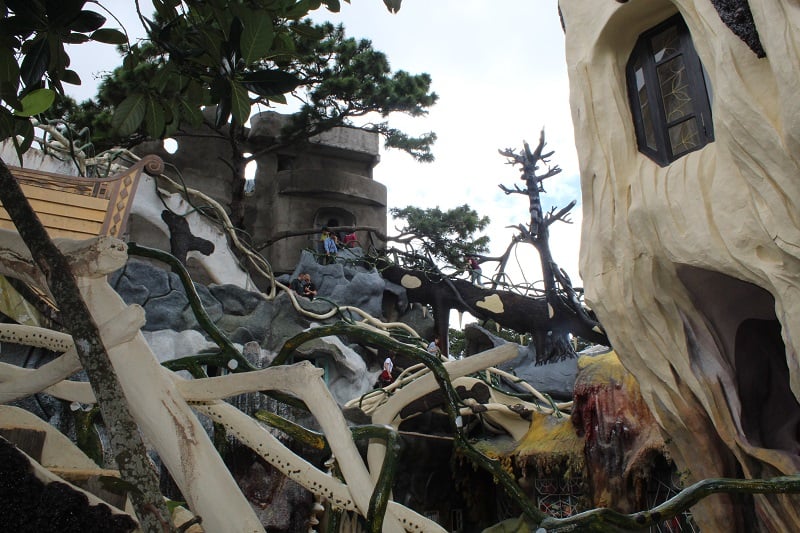
Dinner starts early today, with one of my favorite things we did in all of Vietnam: the Da Lat Street Food Tour. The tour is with Binh, a native of Da Lat who's passionate about his city's food and speaks great English to boot.
On the tour you'll stop at 5 local places to try one dish at each place, from appetizers to mains and on to dessert. The tour lasts about 5 hours, and on it you can pick his brain about anything Da Lat or Vietnam-related.
You can book a tour for any day of the week, and some others may join you. To make a booking, simply email Binh at vietfoodtours (at) gmail.com. Binh is still taking tours through his email as of May 2022.
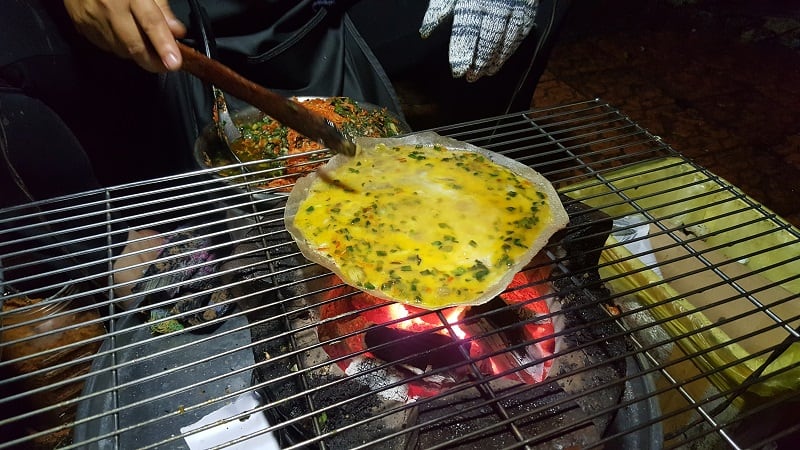
If you're as big a fan of Binh as I am— which you really will be— then you should book an Outta The City Tour (as I call it) for Day 3 in Vietnam. This is actually a customizable private tour, either by car or motorbike, which includes pickup and drop-off. He'll take you to buy lunch at any type of restaurant you're interested in.
We already had a bunch of places in mind, but if you're not sure where to start then ask Binh for a list of the usual stops and he'll send it right over. He'll also offer to take your picture at many points, so take full advantage!
Our tour started with the Cable Car, a beautiful trip that took about 10 minutes and went over the forest for a wide city view. On the other side is the Zen Monastery and a nice view of Tuyen Lam Lake. Binh took us for a closer view of the lake afterwards, to take pictures before leaving for Datanla Falls.
At the Falls you can hike to the water or take a rickety roller coaster both ways (with speed control; speedier people go first). There's a small coffee shop at the bottom, and you can buy the picture taken of you at the top of the coaster (60Kđ each). This is also a big adventure travel area, if you're into that sort of thing.
After lunch back in town we drove through Ta Nung Pass and saw the flowers, then went to the Rice Wine Maker, which also has a Weasel Coffee operation (we opted for regular coffee). The Linh An Pagoda, with its massive Buddha and dragon, as well as an open-air temple, is striking next to the blue skies.
Right next door is Elephant Falls, a very perilous waterfall you can hike carefully down to (seriously bring tight gripping shoes and a poncho for the rain off the waterfall).
Just down the road is the Silk Factory, where you can learn the actually quite gross process of silk manufacture before heading home. In all we paid about $30USD per person (plus a few entrance fees for foreigners), making it one of the cheapest days we had in 10 days in Vietnam, as well as one of the most packed.


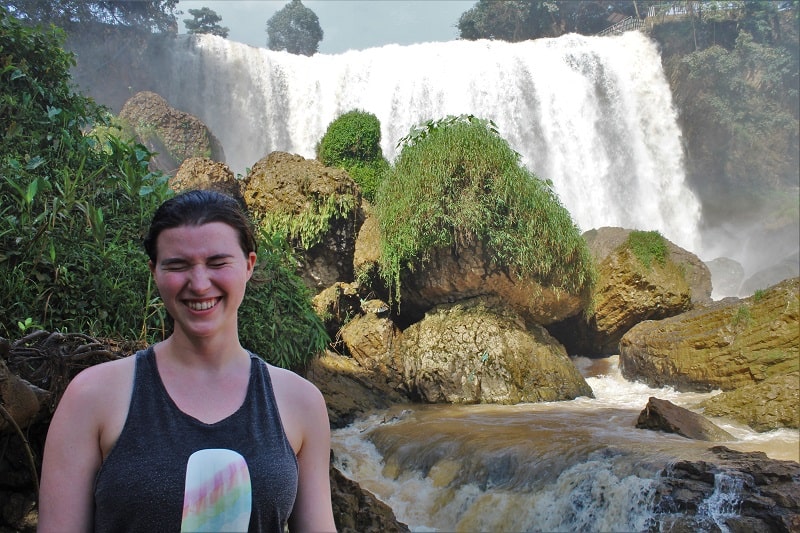
Your last day in Da Lat starts early, with a coffee tour at K'Ho Coffee. It's a large plantation owned & operated by members of the region's ethnic minority population, of the same name. From the start at 8am until lunch around 12:30pm, you'll learn all about how coffee is grown and harvested, and then processed into that familiar liquid. Did I mention that it's an all-you-can-drink tour?
First you start with some coffee and learn the basics of the crop, asking any questions you'd like. Then your guide will take you down to the farm itself and talk to you about growing and harvesting coffee, processing, and demonstrate the parts of the coffee cherry.
Next you head up to the entrance to learn about post-harvest processing and sorting, then to the workshop down the road for a roasting and cupping session. You even get to take home your own coffee at the end, after a nice big lunch! Don't forget to tip your guide and ask for more coffee anytime you'd like (aeropress, pour over or french press).
The end of the year is the main harvest time, but you can still see red coffee cherries and learn about the process any time of year. Pro-tip: take a taxi to K'Ho and carefully follow the GPS so your driver doesn't take you to one of many other farms.
Afterwards, take a rest at your guesthouse (coffee nap, anyone?) and mentally prepare for your first cooking class in Vietnam. At 4pm you'll meet Son from Life in Laugh Homestay for her cooking lesson, at which you can choose 3 dishes. Once you pick your dishes she'll take everyone to the market to buy the ingredients and then get to cooking.
If you take an evening flight to central Vietnam, you'll have to make up for missing out on Son's class by taking a cooking class in Hoi An. Vietnamese food is such an easy & delicious cuisine to get the hang of, not to mention healthy.

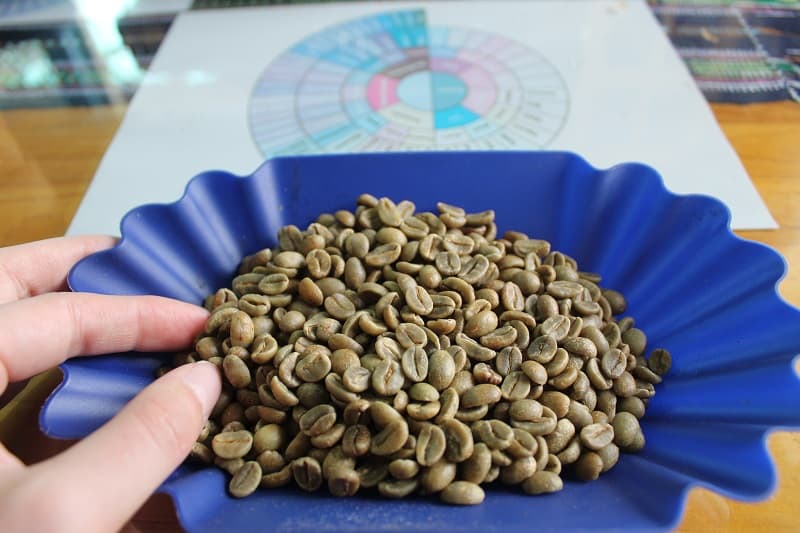
Day 5-7: Hoi An
Hoi An is my favorite city in Vietnam. There, I said it. People raved about it, but I'd thought it was all hype, because nowhere could be that good. Yet I was happily incorrect about Hoi An. While the city has plenty of people looking to make a quick buck off of visitors, it still has a very small-town feel.
Known as The Lantern City, Hoi An's colorful paper lanterns light up the sidewalks on both sides of the river, enchanting you to cross the bridge to the mainland. Just a few minutes outside of town, the farmland begins again.
For tourists, Hoi An is at its most remarkable around sunset, when the lanterns begin coming out and the boats populate the river, taking us all on a journey (whether you pay for it or not). For my fellow foodies, Hoi An is the city to experience bánh mì (local sandwiches), cơm gà (chicken rice), and mì quảng or cao lầu (both regional noodle dishes).
As the middle of your trip, Hoi An is also just a beautiful place to relax and wander. Over our several days in Hoi An, we stayed in a nice guesthouse on the little island in the Minh An region of the city. Choosing where to stay in Hoi An is sort of an embarrassment of riches, however, as the entire town is beautiful.
For your 3 days in Hoi An, I'd recommend spending one day walking around to the temples and other beautiful sites in the city, another day biking into the countryside, and the last day at one of the nearby beaches. All of these days are interchangeable, but I'd highly recommend doing the bike tour on a Tuesday so you can meet some of the local students and experience the area from their perspective.
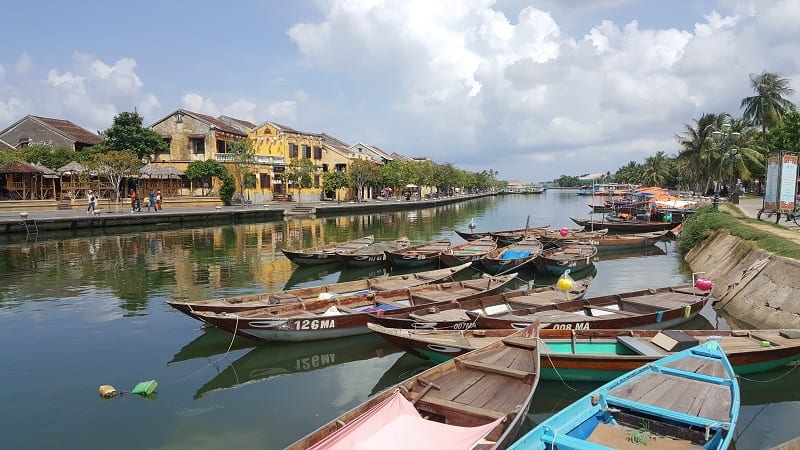
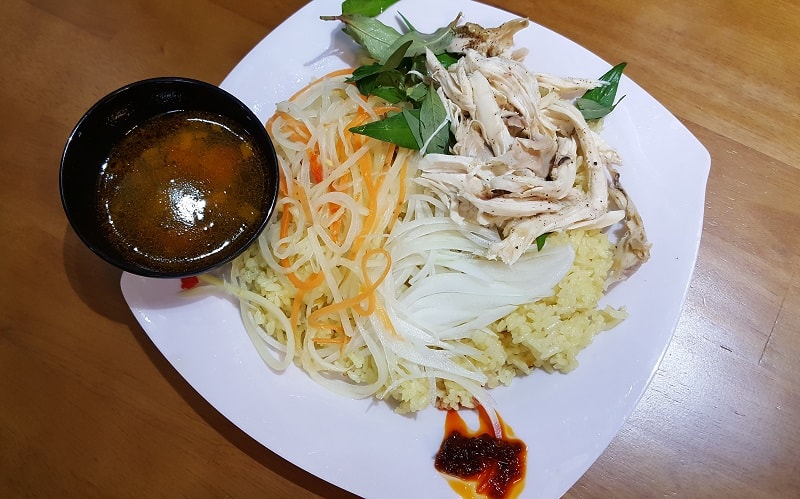
On your first day in Hoi An I feel the need to introduce you to my favorite restaurant in the whole town: Madam Khánh's, also known as the Bánh Mì Queen. I cannot stress strongly enough how much I will miss eating here, as we managed to eat here three times during our stay.
For less than $1USD you can get a mixed sandwich with high quality meats & pâté, delicious sauces, and fresh vegetables. There's a vegetarian option available. Their coffee was also some of the best we had in a whole month of traveling Vietnam; order both a coconut coffee and an egg coffee and I guarantee immediate gratification.
The service is meh, but I imagine they don't get paid much, so we always left a little tip and got a nice smile from the otherwise surly server. They open early and close when they sell out in the evening (usually between 4pm-6pm), so come here for breakfast or lunch, either eating in or grabbing takeaway.
To learn more about the city's history you can walk around the Tran Family Chapel or take a tour of the Old House of Tan Ky. Both of these sites are on their way from Madam Khánh's to the riverfront. Just before you cross the bridge back to the island is the Covered Japanese Bridge, located in the center of Old Town.
The ornate structure has become one of the most iconic sights to see in Hoi An, and is definitely worth a visit. Afterwards, take a walk around the rest of the Old Town, which has been declared a UNESCO World Heritage Site and contains a number of other notable ancient structures.
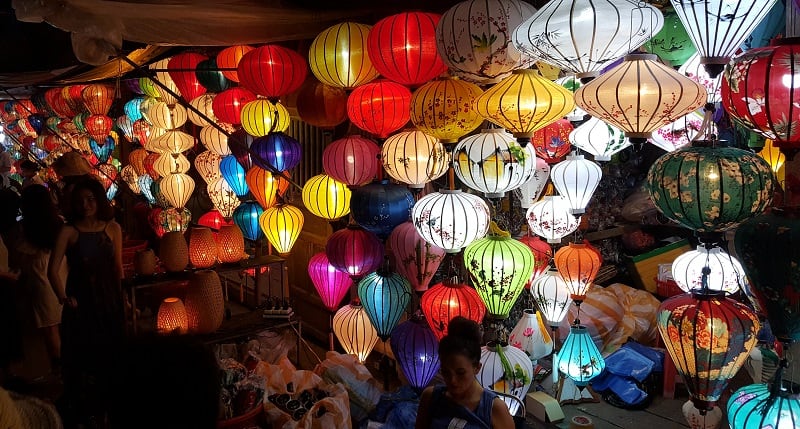
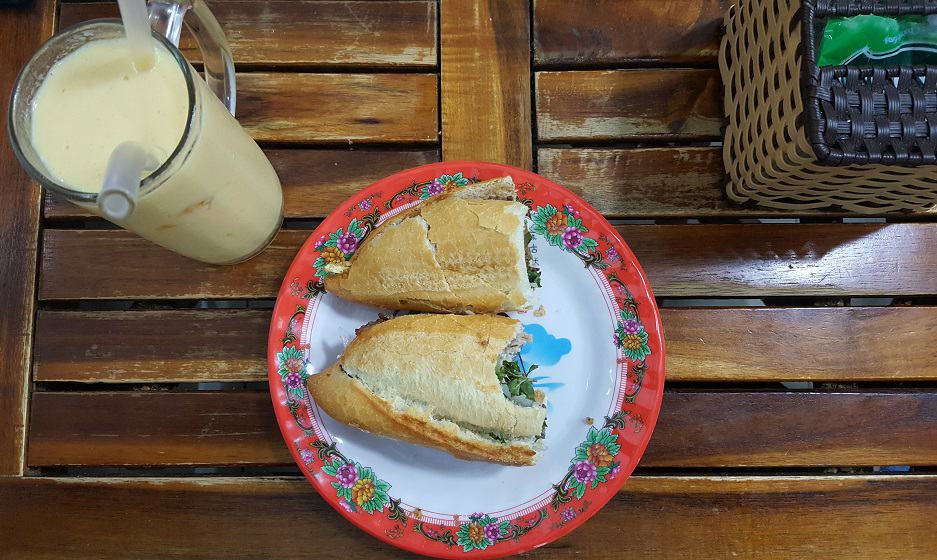
Around the Old Town are several different cafes in which you can relax, but Hoi An Roastery is one of the most famous (though we humbly think Madam Khánh's coffees are better), plus they have several locations and sell pastries. As the sun sets, one of the most popular tourist activities is to take a boat ride along the river at night.
We never did it because dark water freaks me out, but the lowest price we were quoted was đ100K, while a reasonable price is đ20-30K per person. Add another đ5-10K if you want to release a burning lantern into the river (which I don't recommend for environmental reasons, but live your best life).
If you're not tired from walking around all day in the heat, across the bridge on the island is the Lantern Market. There you can find plenty of restaurants for dinner or some Bia Hơi (fresh local beer), though I'd recommend going for some street food.
A rice paper "pizza," some banana pancakes, and a roll ice cream should fill you right up. If you're lucky you'll stumble upon a Vietnamese desserts shop, great for a sweet treat before bed. Kem Ống is a stick ice cream you can find all around the market, in 6 different flavors, and would be my first choice.
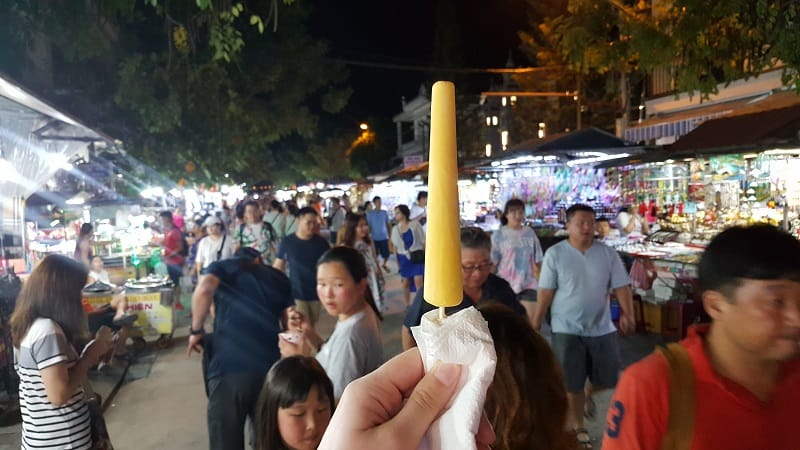
On your second day in Hoi An, head into the countryside. I'd recommend making your countryside day on a Tuesday, Saturday or Sunday, as a local student group offers a Free Countryside Bike Tour every week on those days. The tour starts around 8am and takes you to see how rice paper, local mattresses, and boats are produced just outside of Hoi An.
The only cost is the đ50K ($2USD) bike rental and any small tips you want to give the families you visit. Don't forget to also tip your guides, if you liked the tour! If you can't make it to one of the free bike tours, there are lots of locally-based groups which also offer bike or tuk tuk tours around the countryside; check some out here.
Your bike tour will finish around 12pm or 1pm. After resting at your hotel, head back out to the area just north of Old Town, where you'll find a number of souvenir shops and tailors. Hoi An is famous for its tailoring and variety of high quality clothing shops, so many people choose to order a hand-made dress or suit on one of their first days in the city.
Alternatively or additionally, head up to Au Lac Chocolate to grab some handmade chocolate, crafted from bean to bar right in Hoi An. Head back to the river for sunset and dinner at the market.
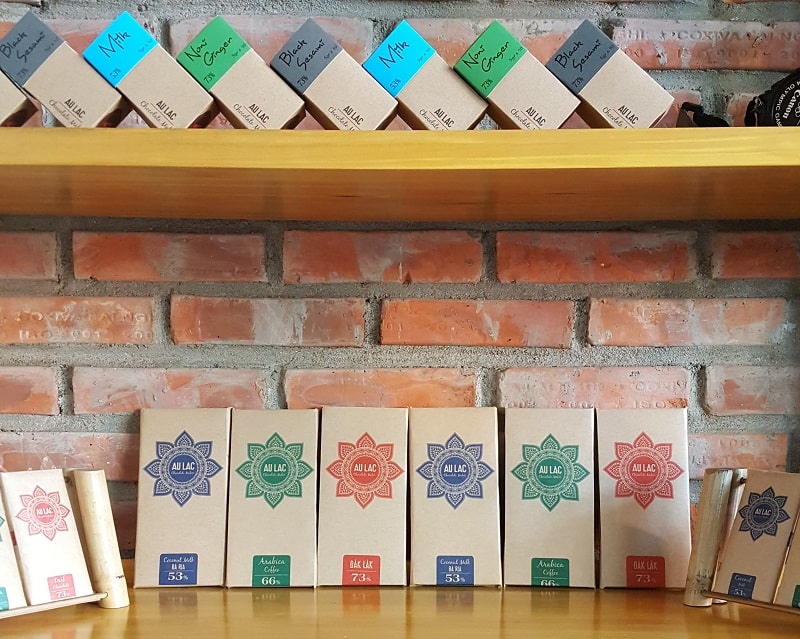
Day 7 of the Vietnam itinerary brings us to the day trip options. We chose to take a Grab Car over to one of the nearby beaches, as we'd prefer to put our money in the hand of locals as much as possible. Popular beach spots are An Bang and An Bang South, and to a lesser extent, Ha My.
Pro tip: grab lunch or drinks at one of the restaurants along the beach and then use their chairs and umbrellas to relax afterwards.
On the other hand, some people prefer the ease of an organized tour, and I fault them not one bit. If that's your preference then I'd recommend heading to Cham Island, just off the coast, where you can snorkel, scuba, and sunbathe to your heart's content.
During high season you can easily just take a boat over to the main island & DIY from there, but in low season (June to November) it's better to take a tour. Plus it often includes lunch. If a beach day isn't really your thing, you can take a day trip into Da Nang or Hue, two popular cities in the region (one of which you initially flew into), which have a lot for urbanites to enjoy.
Also, My Son Sanctuary is a nearby collection of ancient Hindu temples, which remind me a bit of Angkor Wat in neighboring Cambodia. If you're not visiting Cambodia and have even a little bit of interest in the history of the region, this is a can't miss site. If you still have the stamina, there are even bike tours to the site.
Don't forget to arrange transportation with your hotel ahead of time if you have an early or late flight up to Hanoi.
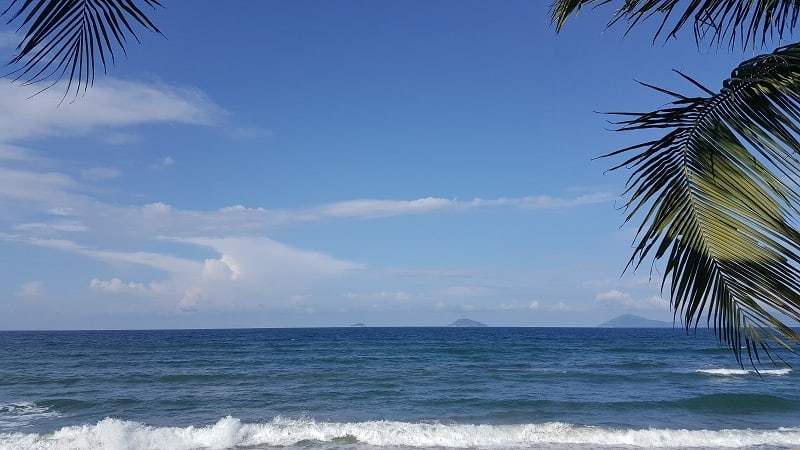
Days 8-10: Hanoi
Many visitors choose to spend their 10 days in Vietnam exploring either the north or the south, as there seems to be so much to do & see in both places. Yet for the food lovers among us, it would be an absolute shame to only try southern or northern Vietnamese cuisine. It just would be.
And when it comes down to all the many things touted to tourists, not all of them are worth the exploitation of people, cultures, and the environment that come along with them. It's a combination of those things which leave a bad taste in my mouth, and make me wish I'd spent my $35 or $40 hiring a local guide for the day rather than going on a big group tour to Ha Long Bay.
Or Sa Pa or Cat Ba, or even Ninh Binh, which is actually the only day trip from Hanoi I would recommend. Each of these spots is still beautiful, but what the massive influx of tourists is doing to the local economy (inflated prices) and environment is saddening.
Not to be too much of a downer, because there is still so much beauty in Vietnam. If you visit each place at the right time and with the right people, it can be wonderful and have a positive impact upon locals. It just usually doesn't. So this 3 day Hanoi itinerary takes you to places locals actually visit, with a few touristic spots thrown in for good measure. You ready to eat & then walk it off?!
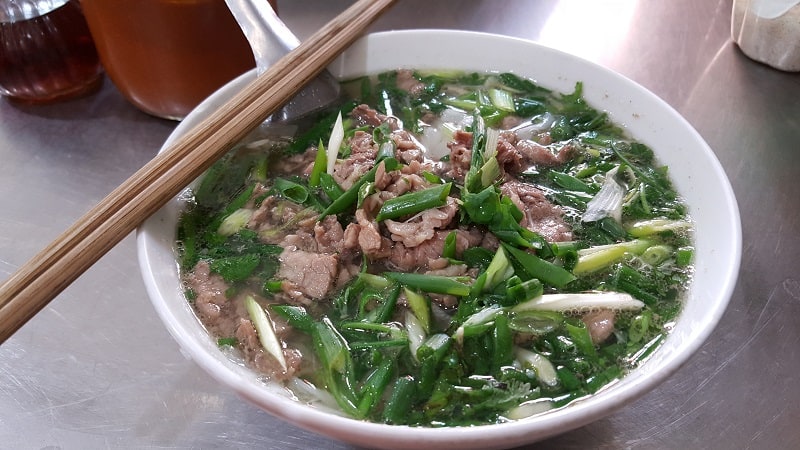
Day 8 of the Vietnam itinerary is reserved for getting to know the country's capital. If you arrived in Hanoi the night before, grab some bánh xèo (Vietnamese pancakes) for dinner at Bánh Xèo Cầu Đất (address: 74 Cầu Đất).
In the morning grab breakfast phở at Phở Thìn, a local establishment that's become so famous that it's expanded internationally. My recommendation is the phở bò (beef noodle soup), sans cilantro.
From there walk to Hoàn Kiếm Lake to people watch and maybe even play a round of đá cầu (intense Vietnamese hackey sack; we once got roped into a game for two hours). Walk around the lake and the Old Quarter to the north before circling back for some good old fashioned egg coffee (cà phê trứng).
One of the best spots for this Hanoi specialty is up the rickety steps of Cafe Đinh, where you can get a delicious cup for less than $1USD. Heading back out, it's time to explore Hanoi's French Quarter, to the east of the lake. Just looking at all of the beautiful architecture and seeing the numerous embassies lined up brings home all the important history in the city. Hanoi Opera House is one iconic example.
Note that Marou Chocolate also has their second location just a few hundred meters from the French Embassy, if you're feeling a chocolate craving coming on in Hanoi. For dinner grab some Hanoi-style bánh xèo if you missed it last night, or head to almost any street corner for your first bowl of bún chả, another Hanoi specialty.
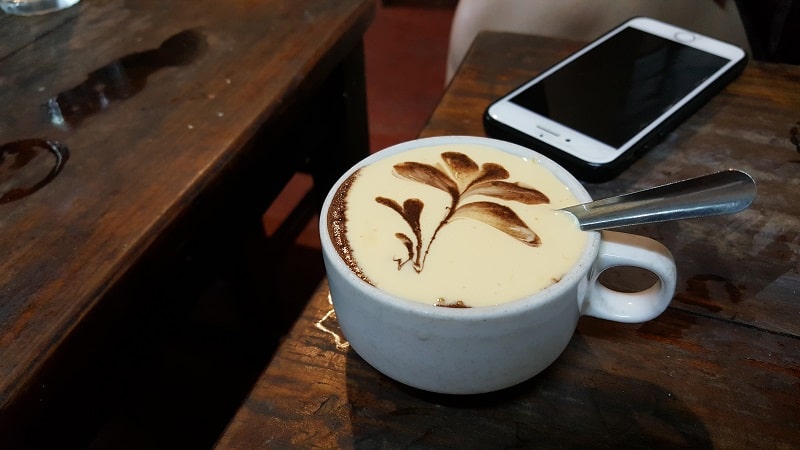
Your second day in Hanoi is reserved for Ninh Binh. Described as "Ha Long Bay on Land," Ninh Binh (pronounced "ning bing") is a much more local alternative to the other touristy nature-oriented sites in northern Vietnam. The area is a flat riverbed punctuated by rice fields and interrupted by tall mountains and ancient temples.
During the rainy season the greens get brighter and the stream of tourists lessen, though it's a popular weekend trip for Hanoiers during all but the coldest months between November and February. While the area itself is worthy of a few days, doing a day trip to Ninh Binh without a tour group is more than possible.
Simply book round trip train tickets from Ga Hanoi Station to Ninh Binh Station on 12go.asia, and plan to have an early start to your day by taking a Grab to the train station. Once you arrive at Ninh Binh you'll need to call a Grab or take a MaiLinh or VinaSun taxi to the boat area.
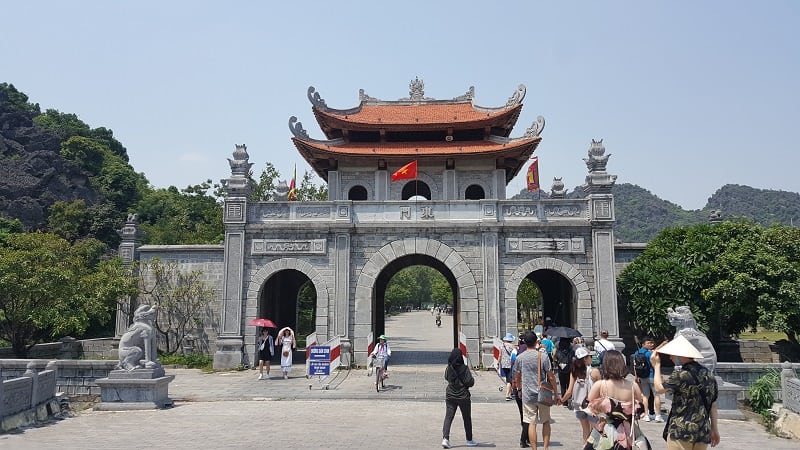
We went to Tam Coc and found it beautiful but a bit off-putting, while my local friend recommends visiting Bái Đính and taking a boat on Tràng An instead. Either way, it's better to visit in the morning so that there's less of a chance of raining on your boat ride.
From Tam Coc it's a 120,000 VND National Park fee per person and 150,000 VND per boat (with 2 passengers), while it's a flat 200K per person at Tràng An. The drivers at Tam Coc pedal with their feet, but they're much pushier with asking for tips and tricking you into buying snacks from their friends along the way.
Tràng An boats have more people, but it's a longer trip with a lot more to see and much less pushiness. If you have the stamina, then close to Tam Coc is the Mua Cave Climb which offers a great vantage point (though the entrance fee of 100K is equally as steep)
This post offers some great tips on visiting Ninh Binh thoughtfully, even on just a day trip. Keep in mind, also, that the people who steer the boats are local villagers who have the chance to work on the boats just once a week, so your tip is hugely appreciated and necessary.
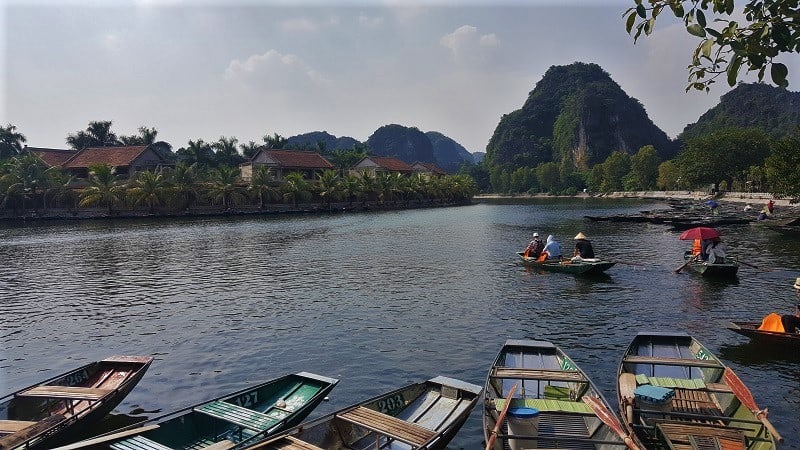
On the last day of this Vietnam itinerary, I direct you to one of the most typical meals in Hanoi: bún chả. But this is no typical version, as this is the very same bún chả that Anthony Bourdain & President Obama ate on their famous visit to Vietnam's capitol.
Go early in the morning, and a bit out of your way, to have breakfast at Bún Chả Hương Liên, now also known as Bún Chả Obama (seriously). I was skeptical, but this was some of the best bún chả we had in Hanoi, worthy of its title & amusing for the clear barrier they put around the table where the two men famously dined.
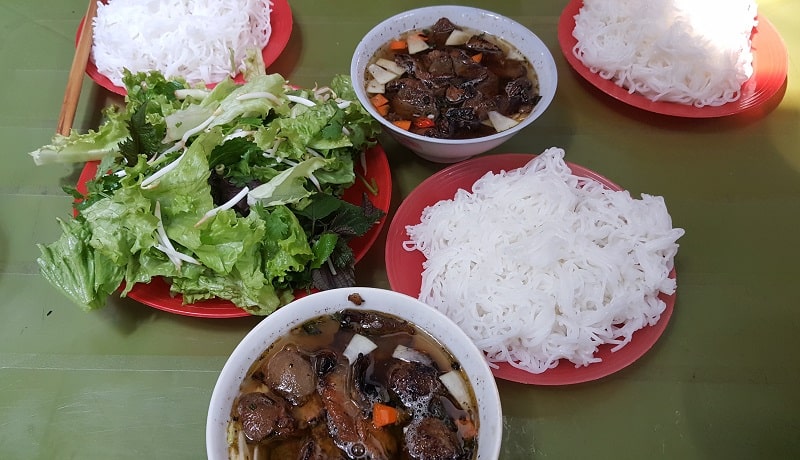
After filling up on noodles, take a Grab up to Ho Chi Minh Museum for a more northern take on the man they renamed Saigon for. The museum also gives more of the specific history of communism in Vietnam, which has played a huge role in the entire region.
Next up is the Flag Tower of Hanoi, famous for being a UNESCO World Heritage Site and a symbol of communism's stronghold in the city. It's also a bit out of the way, but after week in Hanoi we all decided that Blackbird Coffee was worth the extra trip.
If you're already tired from all that walking, Blackbird is perfect for delicious American & Vietnamese style coffee, as well as a great place to relax out of the heat. You may have also heard of nearby Hanoi Train Street, but the government is now in the process of shutting it down, so that won't be on this Hanoi itinerary.
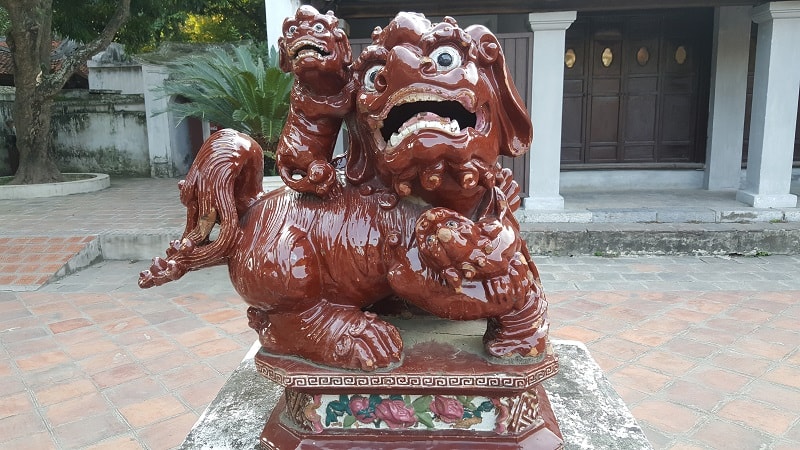
Our last stop today is at the campus of Văn Miếu (the Temple of Literature), a truly ancient temple which dates back to the 11th century. The entrance to the temple itself has become famous for being on the back of the đ100,000 note, but it's gorgeous in its own right.
We loved just wandering around in the gardens and looking at the signage explaining the historical significance of everything. Remember that it is a temple, so wear a sleeved top and pants if you want to go inside.
Your final dinner in Hanoi will be at Sadhu Vegetarian Restaurant, a delicious vegetarian buffet spot where you order off of the menu and they prepare everything fresh. You choose from many dozens of dishes, and they come out like small plates with just enough for everyone at the table to have a bite or two.
Drinks cost extra, but for just $12USD a person for food, I can't recommend it enough to everyone. If you have the forethought, try to make a reservation, but it's not completely necessary.
Pro-tip: head to Vạn Xuân Foot Massage at any time of day for a relaxing semi-full body foot massage at just $5.50USD per hour. Bonus: if you like to Latin dance, Beso Latino had the best music & nicest crowd of all the clubs we checked while in Hanoi (socials on Friday & Wednesday nights). Head back to Phở Thìn for one last breakfast phở, or maybe a bún chả to-go, before you head to the airport.
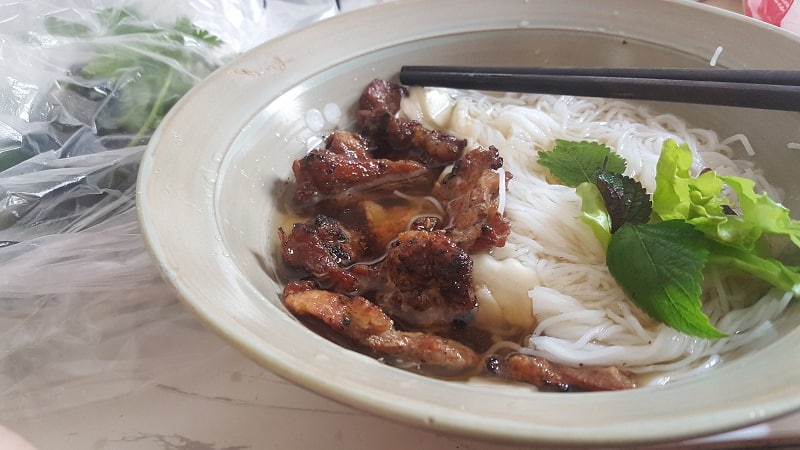
What To Prepare in Advance
- Apply for your visa and print it out if possible.
- Download the Grab app.
- Make sure you know how to get to your hotel in Saigon or Hanoi before you land.
- Bring at least $100USD in big bills in case your card doesn't work for some reason.
- Contact Binh about the tours, Son about the cooking class, K'ho about the coffee tour, the team in Hoi An about the bike tour .
- Optional: organize a day tour to My Son or Cham Island.
- Book a ticket to/from Ninh Binh.
- Alert your bank of your upcoming travel plans.

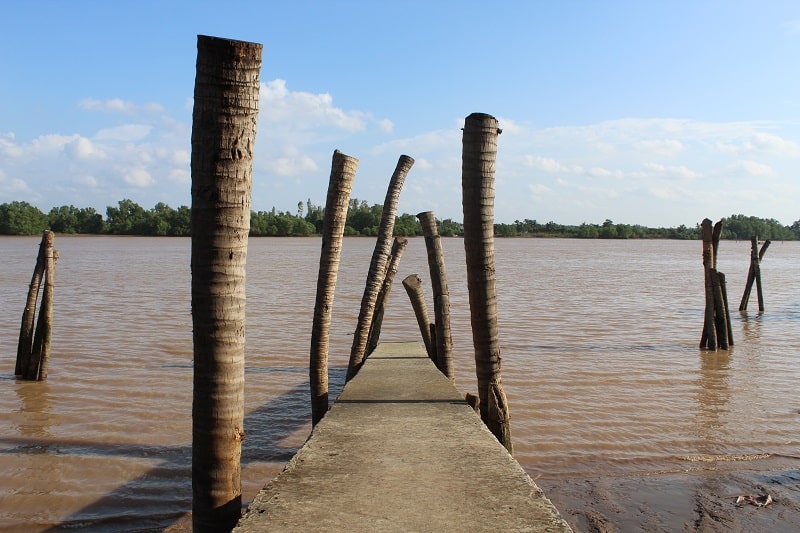
How To Cross The Street In Vietnam
This is half joking, and half trying to not get you killed. The traffic is worst in Saigon, but Hanoi has its fair share, especially during rush hour. Unlike in Thailand or Laos or Cambodia, Vietnamese driver honk at everything all the time, so try not to be startled. These are the main things to keep in mind.
- To cross a busy street in Vietnam, raise the arm closest to traffic high in the sky and stare down the drivers. People feel worse about running you over if they can look straight in your eyes.
- Maintain a steady pace (scooters seem to gauge when to go based on your speed at take off)
- Never hesitate
- Beware of uneven pavement on either side (takeoff or landing)
- Remember that honking is for spacial awareness, not because they think they'll crash into each other constantly
- Cross with other people if possible (especially Vietnamese people)
- Never look down at your phone; this is not a multitasking activity
- Just because you have the light, don't assume you can cross safely
- At rush hour, motorbikes will also hop up onto and use the sidewalk freely
- Above all, walking across the street is every (wo)man for herself

Is there anything you'd add to this Vietnam itinerary for 10 days, maybe if you had 2 weeks, or even a whole month?

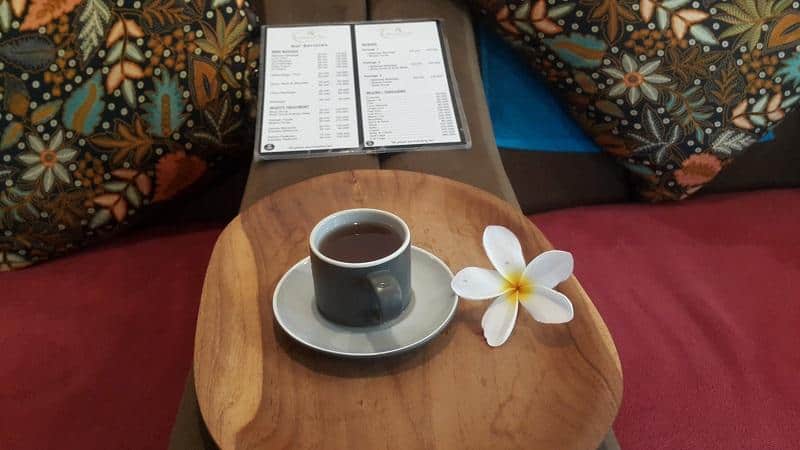
Anahita Irani says
A food blogger like me was jubilant reading your post. You cannot imagine how any notes I have made and what dishes I wish to try. Egg coffee is one of those stunning items on my food bucket list.
Max says
Thanks, Anahita! I'm glad to inspire your trip, and I hope it's a memorable one. 🙂